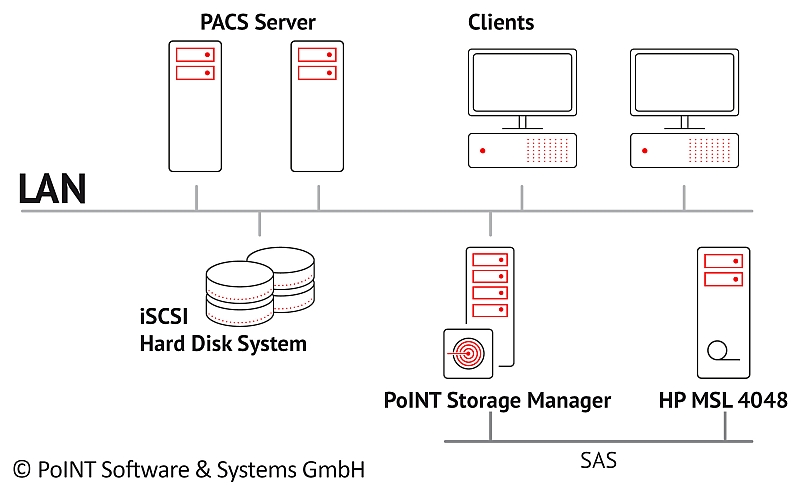The hospital "DRK Krankenhaus Chemnitz-Rabenstein" had implemented a two tiered HSM architecture by PoINT Storage Manager. Within this architecture data can be archived in an automated manner to cost-effective secondary storage and thus expensive primary storage can be off-loaded. Furthermore the backup-volume is decreased significantly by the archiving process whereby cost can be saved and backup-windows can be met. By the built-in migration functionality of PoINT Storage Manager the migration of the remaining data to the new SAS storage system was carried out transparently and without any business interruption.

"We were looking for a solution being able to cope with this complex archiving scenario. It was important for us that data was in permanent access and our colleagues were not affected within the daily work even not within the archiving nor migration process. All requirements were perfectly fulfilled by PoINT Storage Manager."
- Ulrich Wieland, IT- Manager at the hospital "DRK Krankenhaus Chemnitz-Rabenstein"
Challenges
- Archiving of PACS data from the iSCSI hard disk system to 48-slot tape library
- Chronological data gradually stored on tape
- Transparent and uninterruptible migration to the the new primary storage
Solution- PoINT Storage Manager
Archiving
- Implementation of a two tiered HSM architecture based on PoINT Storage Manager
- Automated archiving from an iSCSI based hard disk system to a 48-slot tape library
- Data archived gradually on tape
Migration
- Data of the primary storage is being migrated to the new SAS storage by built-in migration functionality of PoINT Storage Manager
- Archived data can be accessed via the primary storage system by "stubs" and selective re-storing on demand
Advantages
- Efficient use of primary storage by migration of inactive data
- All data permanently available by file system access to primary storage
- Cost and time savings through reduced data volume and backup time of the primary storage
- Data Secuirty by using different storage technologies within the archive tier
- Transparent migration without significant downtime

